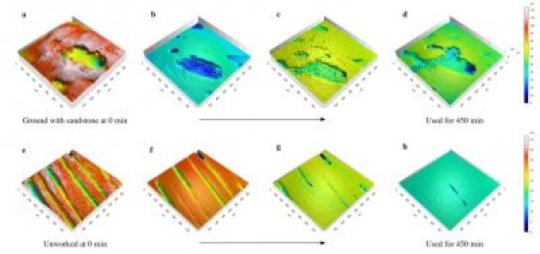[ad_1]
Quantitative three-dimensional analysis of bone wear patterns can provide insight into the manufacture and use of early human tools, according to a study by Naomi Martisius of the University of California at Davis and colleagues, published November 7 in the open-access journal PLOS ONE.
Humans have been using bone tools for at least 2 million years, and by approximately 100 thousand years ago, were manufacturing them with formal processes such as grinding and scraping. Ancient bone tools carry marks of their manufacture and use, which can provide information about the group of people that made the tools and the specific uses to which tools were put. Microscopy has been used to study these marks, but the study of use-wear on bone tools requires a comparative body of quantitative examples of wear over time and contact with different materials, to ensure that these studies are replicable. In the current study, the authors sought to determine the basics of use-wear formation over time by taking incremental molds of bone specimens subjected to a controlled, mechanical experiment.
The authors initially shaped bone with sandstone or flint, or left it unshaped, and then used it to work fresh skin, leather, or bark, all while taking sequential surface scans using confocal microscopy, to generate three-dimensional data for a quantitative Bayesian analysis. While individual samples of bone varied in both texture and structure, they found that duration of use was the largest and most unequivocal determinant affecting the surface of the bone. Fresh skin was the most abrasive of the three materials, and the degree of wear correlated with duration of use for working skin.
Further refinement of the specific methodological techniques may be needed to fully investigate correlations that link tool shaping and target material to observed wear patterns. However, the study provides a proof of principle for application of quantitative measures to bone wear analysis. The novel technique provides a possible alternative to current methods of bone wear analysis, which are largely qualitative and dependent on expert interpretation.
Martisius adds: “If we want to understand how ancient humans used bone tools, we need to understand what the traces left on the tools mean. We tested manufacturing and use variables over time using a quantitative method for looking at these traces, and by extension, at human behavior.”
Story Source:
Materials provided by PLOS. Note: Content may be edited for style and length.
[ad_2]















